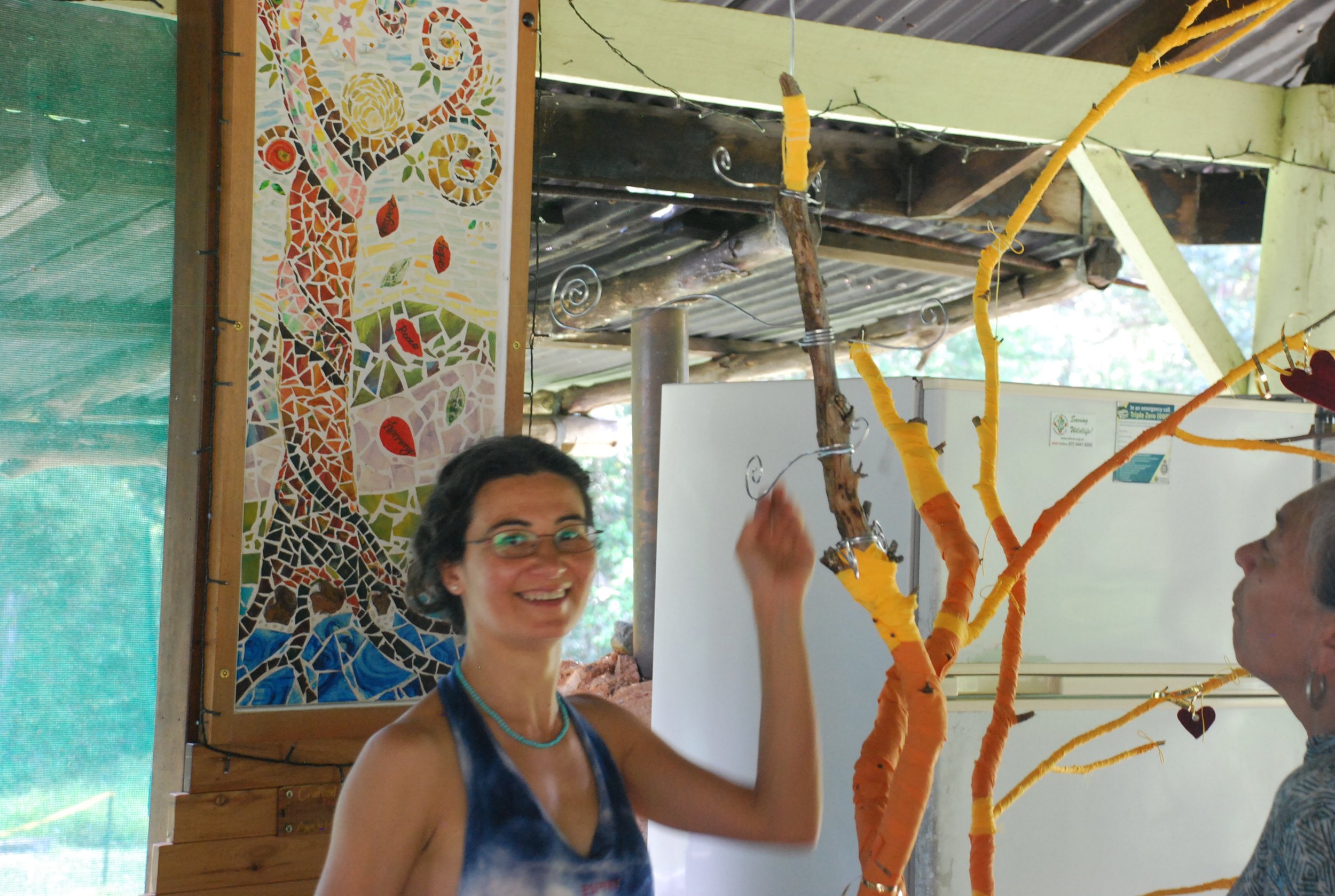Reimagining life as a work of eco-art
My PhD research explores the transformative potential of reimagining ecovillages as works of ecological art. Developed over six years, this project investigates how art functions within intentionally sustainable communities and how these communities themselves can be understood as artworks.
Research Origins
My interest in sustainability began in the 1970s and evolved through experiences with sustainable building, renewable energy, and biodynamic farming. As an environmental artist and resident at Penrith Lakes (a post-extraction quarry site being remediated near Sydney), I observed the challenges of implementing genuine sustainability in new developments. This led me to question: How might art contribute to the fundamental shift in thinking needed for sustainable living?
The Ecovillage as Artwork
My research focused on three Australian ecovillages: Aldinga Arts Ecovillage (South Australia), Billen Cliffs (New South Wales), and Crystal Waters (Queensland). During month-long stays at each community, I conducted interviews, facilitated art workshops, and documented the artistic and cultural practices that shape these spaces.
I discovered that in ecovillages, art isn't restricted to trained artists but is considered an "elemental necessity of life" available to all. Creative expression is woven through every aspect of community life—from experimental building practices to community celebrations, from garden design to personal development.
A Philosophical Framework
To understand this expanded conception of art, I turned to the philosophy of Gilles Deleuze and Félix Guattari, who ask not what art is but what art does. Their conceptual tools helped me analyze how artistic practices in ecovillages create consciousness-changing experiences that orient communities toward sustainable relationships with each other and the natural world.
Drawing on Guattari's concept of "eco-art" from his essay "The Three Ecologies," I examined how art in ecovillages functions across three registers:
The social (creating community structures)
The environmental (producing and transforming physical spaces)
The mental (shaping the subjectivities of ecovillage dwellers)
Beyond "Hippy Enclaves"
Despite their contributions to sustainable technologies and practices, ecovillages have often been dismissed as "hippy enclaves." My research challenges this perception, revealing how these communities operate as what Deleuze and Guattari would call "minoritarian" spaces—creative assemblages that generate new possibilities from within dominant systems.
Implications
This reimagining of art and the ecovillage doesn't suggest everyone should move to an intentional community. Rather, it opens the possibility that all lives can be approached as artistic practices oriented toward sustainability—composing our lives, as Guattari might say, "as an artist would compose colors on a palette."
For trained artists, this perspective doesn't threaten traditional practice but offers enriched possibilities for engagement. Ultimately, my research illuminates how art-as-life thinking can foster transformative processes oriented toward a regenerating Earth and new ways of being in the world.
“Life is a game, play, life is a dance, dance. I’m talking about my thing, that the art of living is one of the best arts. It means you’re connected to yourself, to your environment, to nature. And you work on getting more connections so you can experience who you really are… It’s also to make progress to letting go, to experience that bliss and that happiness.”
Govinda, Billen Cliffs resident, 2018
Further writing on my thoughts on life, art and sustainability can be found on the blog page attached to this web site, or click below to visit my substack blog: Artful Collapse
The bicycle figures, desiring traffic calming.
Aldinga Arts Ecovillage, 2018
Making art with the ecovillage dwellers. Billen Cliffs 35 years celebration, hall decoration project, 2018
Making the Gratitude Tree, Crystal Waters, 2018




